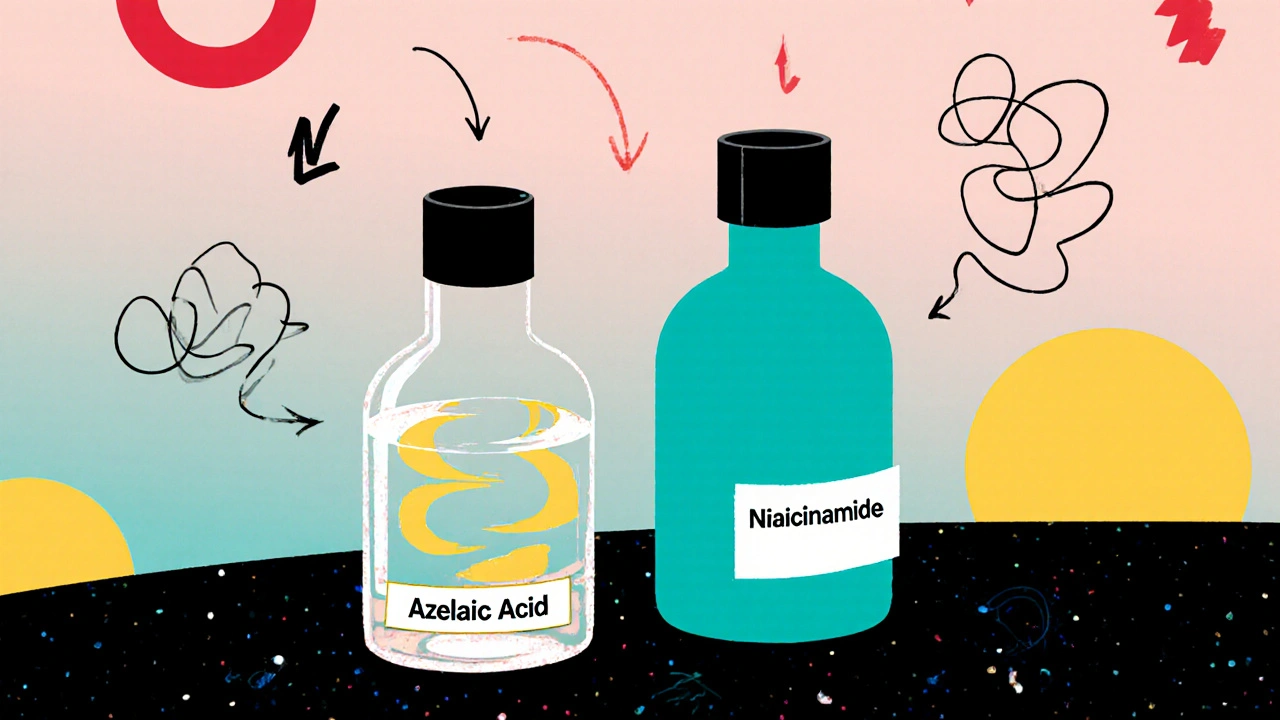Niacinamide: What It Does, How It Works, and What You Need to Know
When you hear niacinamide, a stable form of vitamin B3 used in supplements and skincare. Also known as nicotinamide, it's not just another ingredient on a label—it’s a compound your body actually needs to turn food into energy and repair damaged cells. Unlike some vitamins that flush out quickly, niacinamide sticks around longer in your system, which is why it shows up in so many daily health products—from pills you swallow to creams you rub on your face.
It’s closely tied to vitamin B3, a water-soluble nutrient essential for metabolic function, and works differently than niacin (another form of B3) because it doesn’t cause that annoying flush. That’s why doctors and dermatologists often prefer it. For your skin, niacinamide helps reduce redness, tighten pores, and even out tone. For your insides, it helps regulate cholesterol, a fat-like substance in your blood that can build up and cause heart problems by lowering bad LDL and raising good HDL. You’ll find it in studies on diabetes, arthritis, and even acne—but it’s not a miracle cure. It’s a tool. And like any tool, it works best when you know how to use it.
People take it for all kinds of reasons: some to calm inflamed skin, others to support brain function, and a few to manage blood sugar. But not all products are made equal. The dose matters. The form matters. And whether you’re getting it from a supplement, a cream, or a multivitamin, you need to know what you’re actually putting into your body. That’s why the articles below don’t just list facts—they show you real-world results, side effects, and how niacinamide plays with other meds you might be taking. Whether you’re using it for your skin, your heart, or just to feel better every day, you’ll find practical advice here—not hype.

Azelaic Acid + Niacinamide: Clear Skin Combo Guide
- Oct, 21 2025
- 13
Discover why azelaic acid and niacinamide make a powerful duo for acne, redness, and dark spots, and learn how to add them safely to your skincare routine.
Categories
- Health and Wellness (52)
- Medicine (36)
- Health and Medicine (34)
- Women's Health (9)
- Mental Health (8)
- Men's Health (7)
- Beauty and Wellness (4)
- Health Information (4)
Archives
- December 2025 (24)
- November 2025 (25)
- October 2025 (27)
- September 2025 (14)
- August 2025 (3)
- July 2025 (2)
- June 2025 (2)
- May 2025 (3)
- April 2025 (4)
- March 2025 (4)
- February 2025 (2)
- January 2025 (3)
- online pharmacy
- medication safety
- dietary supplement
- health benefits
- dietary supplements
- prevention
- fertility
- online pharmacy Australia
- diabetes medications
- treatment
- treatment options
- benefits
- connection
- drug interaction
- drug interactions
- pregnancy
- Cancer Treatment
- depression medication
- antidepressants
- quality of life
